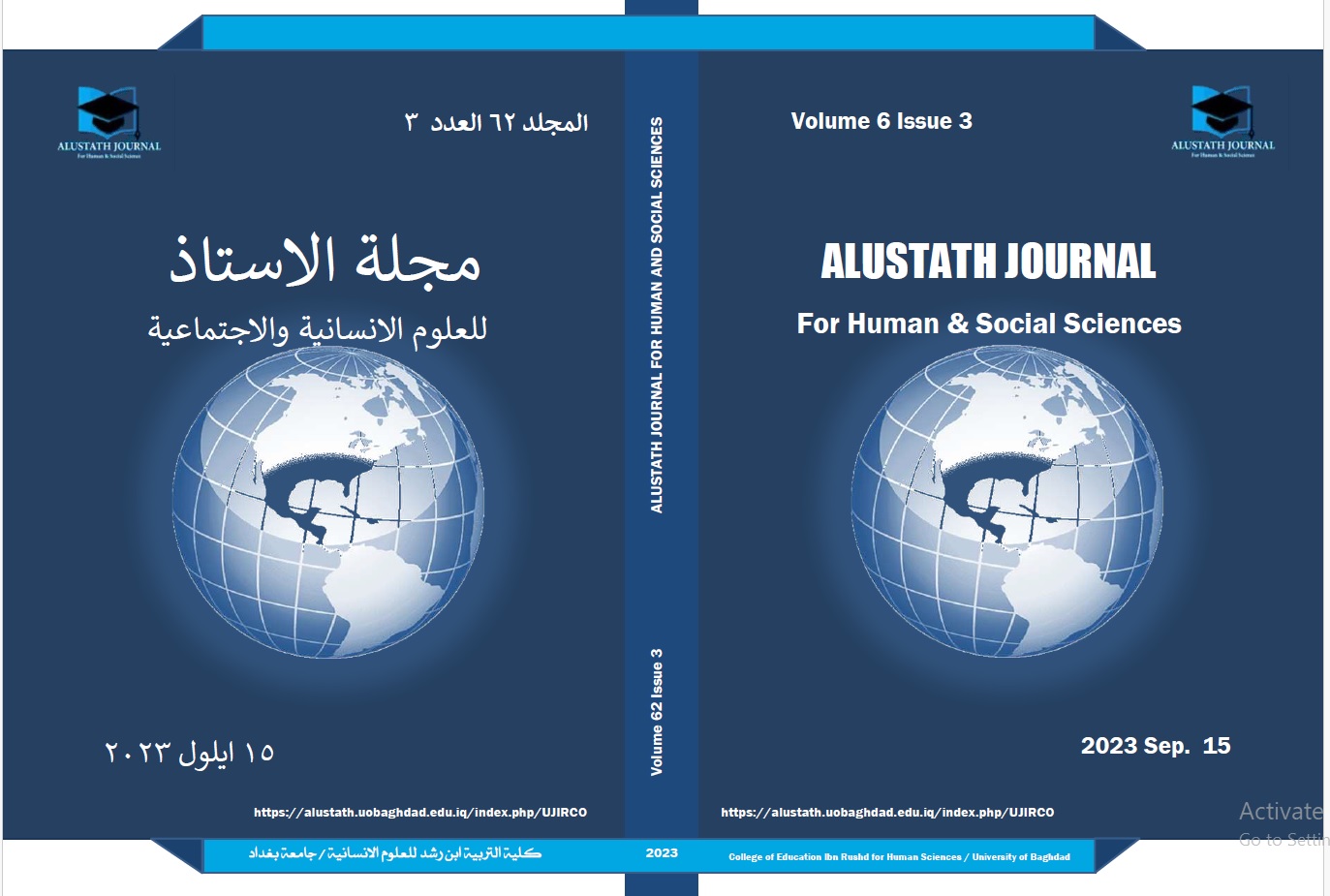A Comparative Study of Male and Female Students in Fine Arts Institutes of Wassit Governorate
DOI:
https://doi.org/10.36473/ujhss.v62i3.2075Keywords:
nonverbal cues, politeness, interruption in conversations, topic of conversationAbstract
Males and females differences in language use are a subject which should be given more attention. Hence the present research highlights the gendered differences in language use in academic settings. Consequently, this study attempts to investigate the differences in language use between males and females students in Fine Arts Institutes of Wassit Governorate. It attempts to achieve the following aims: 1) finding out the differences in language use between males and females students in terms of formal and informal language, nonverbal cues and interruption; 2) pinpointing the differences in language use between males and females students in terms of politeness and the topic of discussion. To achieve the aims of this research and test the validity of its hypotheses, certain procedures have been followed: 1. selecting a sample of males and female students from Fine Arts Institutes in Wassit governorate. 2. Designing questionnaire that includes questions related to the use of polite language in communication, particularly when discussing personal relationships or sensitive topics. The results of this research have revealed that there are some differences in the language use of males and females students. More precisely, females tend to use politeness, formal language and nonverbal cues in conversations more than males. They have also revealed that males tend to use interruptions and topics of conversations which related to males issues whereas females use less interruptions in conversations and choose topics which related to females issues.
Downloads
References
• Al-Ali, M. N., & Arafa, H. I. M. (2010). An experimental sociolinguistic study of language variation in Jordanian Arabic. The Buckingham Journal of Language and Linguistics, 3, 220-243.
• AL-Harahsheh, A. (2012). The perception and practice of silence in Australian and Jordanian societies : a socio-pragmatic study. https://ro.ecu.edu.au/theses/429
• Al-Wer, E. E. (1991). Phonological variation in the speech of women from three urban areas in Jordan (Doctoral dissertation, University of Essex).
• Backhaus, W. (2016). Judith Butler: Gender Trouble. Feminism and the Subversion of Identity, Routledge: New York
• Brown, P. & Levinson, S. (1987). Politeness: Some Universals in Language Usage (Vol. 4). Cambridge university press.
• Butler, J. (1986). Sex and gender in Simone de Beauvoir's Second Sex. Yale French Studies, (72), 35-49.
• Cameron, D. (1998). Performing Gender Identity. Language and Gender: A reader.Oxford: Blackwell Publishers.
• Coates, J., & Pichler, P. (1998). Language and Gender. A Reader (2nd ed.) Oxford/Malden: Wiley-Blackwell.
• Eagly, A. H., & Wood, W. (1991). Explaining sex differences in social behavior: A meta-analytic perspective. Personality and Social Psychology Bulletin, 17(3), 306-315.
• Eckert, P. (1998). Gender and Sociolinguistic Variation. Language and Gender: A reader, 64-75. Oxford: Blackwell Publishers.
• Fishman, P. M. (1978). Interaction: The work women do. Social Problems, 25(4), 397-406.
• Grieser, M., & Kupisch, T. (2016). Gender and language contact. In S. Pfenninger & N. Hidalgo (Eds.), Sociolinguistics and Second Language Acquisition (pp. 98-119). Bristol, UK: Multilingual Matters
• Gumperz, J. J., & Cook-Gumperz, J. (2008). Studying Language, Culture, and Society: Sociolinguistics or Linguistic Anthropology. Journal of Sociolinguistics, 12(4), 532-545.
• Holmes, J. (1985). Sex differences and miscommunication: Some data from New Zealand. Cross-cultural encounters: Communication and miscommunication, 2443.
• Holmes, Janet. (2008). Introduction to Sociolinguistics (3rd Ed).Pearson Longman: New York.
• Labov, W. (1966). The Social Stratification of English in New York City. Washington, DC: Center for Applied Linguistics.
• Lakoff, R. (1975). Language and Women's Place. New York: Harper and Row.
• Lakoff, R. (2004). Language and Woman's Place: Text and commentaries (Vol.3). Oxford University Press, USA.
• Malkawi, A. H. (2011). Males' and Females' Language in Jordanian Society. Journal of Language Teaching and Research, 2(2), 424.
• Meecham, M., & Rees-Miller, J. (2005). Language in social contexts. Contemporary Linguistics, 537-590.
• Mulac, A., Bradac, J. J., & Gibbons, P. (2001). Empirical support for the gender-as-culture hypothesis: An intercultural analysis of male/female language differences. Sex Roles, 45(3-4), 201-223.
• Schilling-Estes, Natalies. (2006) "Dialect variation." In R.W. Fasold and J. Connor-Linton (eds) An Introduction to Language and Linguistics. pp. 311-341. Cambridge: Cambridge University Press.
• Trudgill, P. (1972). Sex, Covert Prestige and Linguistic Change in the Urban British English of Norwich. Language in Society, 1(2), 179–195. http://www.jstor.org/stable/4166683
• Trugdill, Peter. (1968). Sex and Covert Prestige. In Coates, Jennifer (Ed.) (1998). Language and Gender: A Reader. Oxford: Blackwell Publishers.
• Wardhaugh, R. (2006). An Introduction to Sociolinguistics (5th Ed.). Malden, MA: Blackwell Publishers.
• Wolfram, Walt, (2004) Social Varieties of American English. Language in the USA, ed. by E. Finegan. Cambridge University Press.
• Zimmerman, D. H., & West, C. (1975). Sex roles, interruptions and silences in conversation. In B. Thorne & N. Henley (Eds.), Language and sex: Difference and dominance (pp. 105-129). Rowley, MA: Newbury House.












